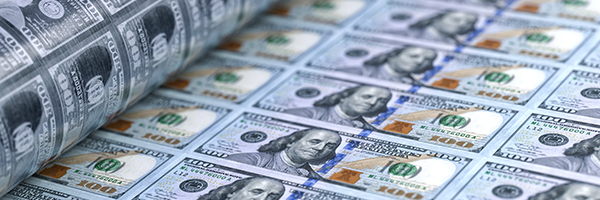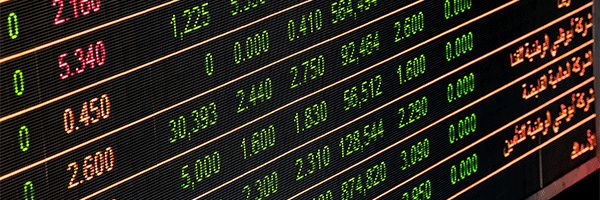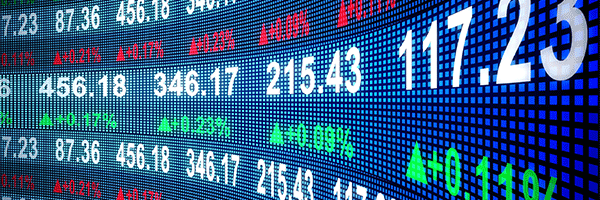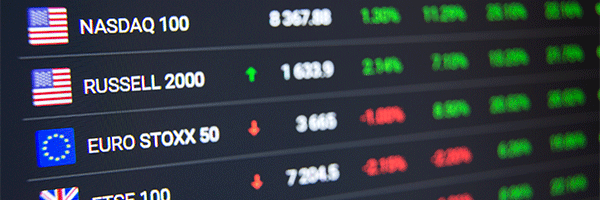
February 12, 2024 | Daily JAM, Mid Term |
When I wrote my post “Was the Meta Platform 20% pop the market top? An important sign, yes,, but not for the reasons you think” I wasn’t thinking of a three-part series. But then came Part 2 “Why his isn’t 2000–I don’t see a replay of the Dot-Com Bear Market.”
And now Part 3: “OK, It’s not 2000, but that doesn’t mean there’s no risk in the market.” Part 3 in this series is going to segue right into the new Special Report that I’ll post on Wednesday with seven concrete steps I think you should implement now to protect your portfolio. But for today, I’m going to focus on a framework for thinking thinking about reward and risk in the current market. Think of the topic as “Why your portfolio needs protection now–even if we aren’t looking at a Bear Market.”

December 4, 2023 | Daily JAM, Morning Briefing |
I’m hearing some chatter that says bond traders and analysts are stepping aside from the bond rally. Or are planning to do so. Their argument is that the move has been too far, too fast. Specifically, I’ve heard talk of selling if the yield on the 10-year Treasury hits 4.00%. On Friday, the yield was 4.20%. So I’d be watching to see if anything like a bond rally pause or reversal materializes during the days ahead of the Federal Reserve meeting on December 13

November 10, 2023 | Daily JAM, Mid Term, Morning Briefing |
My bets on rising volatility have been hammered in the last few days. The December 20 Call Options on the CBOE S&P 500 Volatility Index (VIX) at $280 a contact dropped another 21% today to $121 a contract. The January 17 Call Options at 17 that I bought for $268 closed at $211, down another 16%.The VIX itself ended the day at 14.23, down 7% for the session. It’s sure hard looking at losses like this. But I would remind you that the VIX is very volatile. The volatility index was at 21.71 on October 20. And that the calendar is marked with two big events that could reunite financial market volatility, one courtesy of the House of Representatives and the other courtesy of the Federal Reserve.

October 27, 2023 | AMZN, Daily JAM, INTC, Short Term, Top 50 Stocks, VIX, Volatility |
To subscribe to JAM you need to fill in some details below including, ahem, some info on how you'll pay us. A subscription is $199 (although if you're subscribing with one of our special offers it will be lower) for a year for ongoing and continuing access to the...

October 24, 2023 | AAPL, ALB, CAT, Daily JAM, DE, Dividend Income, DUK, F, GM, Jubak Picks, Mid Term, NI, SCCO, Short Term, Special Reports, Top 50 Stocks |
I’ve hi-lighted the key characteristics of the coming global debt bomb explosion that investors MUST include in any plan to protect a portfolio from the explosion of this bomb.

October 3, 2023 | Daily JAM, Short Term, Volatility |
The VIX, the CBOE S&P 500 Volatility Index, climbed another 12.32% today, October 2, to 19.78. The Call Options–with a strike at 17 and an expiration on December 20–I bought on the VIX on September 25 are up 38% as of the close on October 2. (I hold them in my Volatility Portfolio.) I’m inclined to hold them a bit longer because:

October 1, 2023 | Daily JAM, Short Term |
Kicking the shutdown 45 days down the road doesn’t change a single vote in Congress. The question remains exactly what it was before Saturday’s vote–Will McCarthy–or whoever is Speaker–use Democratic votes to pass legislation to fund the operations of the Federal government? Anything that increases the chances the Congress will return to its pre-vote chaos–or worse–will be a negative for financial markets. Anything that points to a full fiscal year budget based on a willingness to use Democratic votes in the House to pass a full fiscal year budget will be a positive for financial markets.

September 24, 2023 | Daily JAM, Morning Briefing, Short Term, Volatility |
Tomorrow, Monday, morning I’ll buy CBOE S&P Volatility Index (VIX) Call Options (so the options will go up in price if volatility does) for my Volatility Portfolio. I’m buying the December 20 Call Options with a strike price of 17 (VIX231220C00017000.)

September 20, 2023 | Daily JAM, Volatility |
The CBOE Volatility Index, which measures short-term volatility in the Standard & Poor’s 500 stocks, has been stuck below its long-term average of near 17 since the regional bank crisis of March 2023. In recent months, the VIX has had a hard time breaking above 17 with the index spending most of its time down about 15. Today, at 1 p.m. New York time, the VIX was at just 14.01, down 0.71% ahead of the Federal Reserve’s interest rate decision. There’s just no fear in this market. So it will extremely interesting to see if today’s interest rate decision and the release of new Dot Plot forecasts for interest rates, inflation, economic growth, and unemployment today from the Fed has any effect of market complacency.

June 29, 2023 | Daily JAM, Morning Briefing, Short Term |
This morning all the way in New York I could hear the gnashing of teeth from Jerome Powell’s office at the Federal Reserve. “What do we have to do to slow consumer spending in the Untied States?” he cried after this morning’s economic data. Today the Commerce Department sharply raised its judgement on first quarter GDP growth. The last revision to the data showed the U.S. economy growing at a 2% annual rate from January through March. That was a huge step up from the 1.3% growth repoRrted in the previous GDP estimate.

May 24, 2023 | Daily JAM, Short Term |
Three numbers caught my eye today as indications of where the financial markets are headed in the short term. I’m looking at the moves in the Russell 2000 small-cap index. In the CBOE S&P 500 Volatility Index ( VIX). And in the odds on interest rate increases from the Federal Reserve on the CME FedWatch tool.

May 20, 2023 | Daily JAM, Short Term |
I expect more posturing, more attempts to extract leverage, and more blaming–but, in my opinion, no debt ceiling deal this week. The big question: “When does the stock market start to take the possibility seriously–unthinkable as it might be–that the United States could default on its debt.













